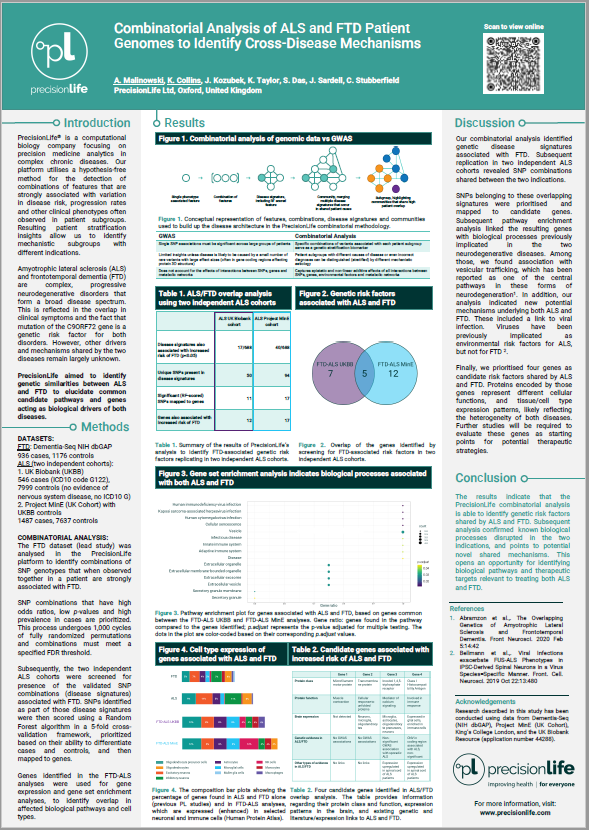Amyotrophic lateral sclerosis (ALS) and frontotemporal dementia (FTD) are complex, progressive neurodegenerative disorders that form a broad disease spectrum. This is reflected in the overlap in clinical symptoms and the fact that mutation of the C9ORF72 gene is a genetic risk factor for both disorders. However, other drivers and mechanisms shared by the two diseases remain largely unknown.
Standard GWAS-based approaches aiming to uncover common mechanisms across different disorders are limited to identifying single variants with high prevalence. However, the key to understanding complex, multi-symptomatic diseases influenced by multiple genetic loci, epidemiological and/or environmental factors is to find combinations of these factors which are associated with the distinct disease characteristics.
The PrecisionLife platform utilises a hypothesis-free method for the detection of combinations of features that together are strongly associated with variations in disease risk, progression rates and other clinical phenotypes often observed in patient subgroups. Resulting patient stratification insights allow us to identify mechanistic subgroups shared by different indications.
Objectives/Methods
Using whole genome sequencing patient datasets for ALS and FTD (ALS: Project MinE, UK Cohort, King’s College London; FTD: Dementia-Seq) and we set out to perform a detailed genetic stratification to identify disease-associated variants that are common in both disorders. Subsequent enrichment analyses will be performed to determine pathways that are associated with genetic variants identified in each indication. This, in turn, will enable us to uncover biological mechanisms that are impacted in both ALS and FTD.
Discussion
Our combinatorial approach enables stratification of heterogenous patient populations to reveal disease mechanisms that classify patients beyond traditional diagnostic categories based on symptoms. Our analyses will provide insights into subgroups of patients with ALS and FTD with common pathophysiological drivers that may underlie specific overlapping clinical manifestations. For each of the subgroups in ALS and FTD we aim to identify distinct genetic patient stratification biomarkers, allowing us to develop precision medicine interventions targeted at mechanisms occurring in both diseases.
Find out more


